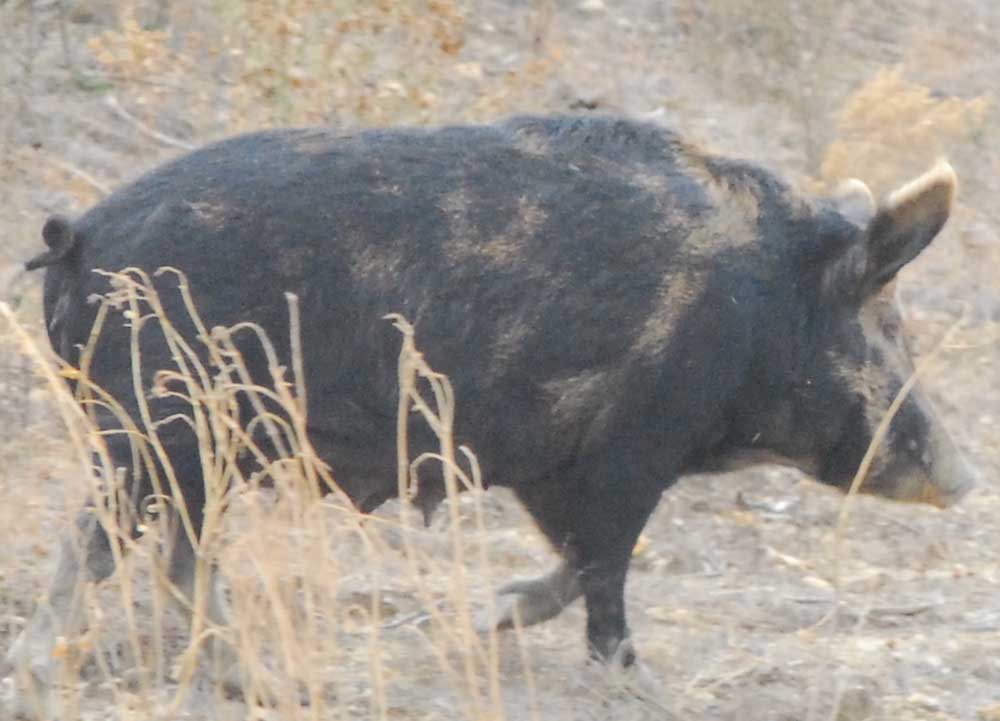Precaution recommended when cleaning, cooking wild pork
Published 12:22 am Saturday, February 24, 2018

- Wild pigs are a nuisance in almost every corner of Texas. Wild pork can be tasty, but hunters need to be cautious when processing and cooking the meat. (Steve Knight/Staff)
Post-deer season often becomes pig season for a lot of Texas hunters. If you are a wild pig hunter and intend to keep and eat the meat, remember this one number — 160.
Existing in almost every Texas county, wild pigs are a problem for farmers, ranchers, homeowners and even golf courses. They are also a year-round target for hunters and trappers.
Trending
Having been called fire ants with fur, wild pigs have no redeeming value beyond recreation. They cause millions of dollars in damage to agriculture crops, not to mention what they do to urban green spaces like parks and golf courses as well as residential property. Hunters also have to deal with them eating corn put out for deer and the inconvenience of them coming into a feeder and chasing off the deer.
Honestly, most wild pigs are treated like fire ants. Killed and forgotten about. For some hunters, however, they also provide food from hams and shoulders. While the meat can be highly sought by restaurants, only about 100,000 a year are trapped live in Texas and sold to pig stations for distribution to restaurants worldwide. The majority of the pork that is retained goes home with hunters.
Like anything involving wild pigs, getting them from the field to the table is not that easy. Wild pigs, especially boar, can be difficult to kill with the armor-like shield stretch from their shoulder back over their rib cage.
The real problem, though, comes immediately after the kill until the pork is served on the table.
“Feral hogs are destructive in nature and their daily patterns include both feeding and fighting,” said Dr. Tom Hairgrove, Texas A&M AgriLife Extension Service specialist in College Station, in a recent warning to hunters and processors. “They fight off other feral hogs in their daily activities of searching for food and can incur lesions or open wounds. This may create openings for parasites and lead to infections, discoloring the meat, etc. That’s why it’s good for those who process feral hogs to be on the lookout for any abnormalities and use safe practices when processing the meat.”
According to the extension service, wild pigs carry about 15 diseases — some of which can be transmitted to hunters cleaning a pig. Two of the most concerning are swine brucellosis and tularemia.
Trending
Know as undulated fever in humans, swine brucellosis manifests in flu-like symptoms. Tularemia, or rabbit fever, also results in flu-like symptoms, but can cause blood infection, pneumonia or meningitis under a worse-case scenario.
To a lesser degree, but not less serious, is the transmission of the bobcat tapeworm. Unlike brucellosis or tularemia from wild pigs that are statewide issues, concerns like tapeworm are more regional. In this case, it is a bigger issue to hunters along the Gulf Coast.
“Pigs can be infected by drinking water with the intermediate host copepods or things that eat copepods like tadpoles. Tadpoles grow up to become frogs or toads, which are eaten by snakes. Eating any of these can infect pigs or people who carry the larval stage. Cats, dogs or raccoons eating any of the above have the adult tapeworms in the intestine,” said Dr. Tom Craig, professor emeritus and Texas Veterinary Medical Diagnostic Laboratory scientist in College Station.
Because of the disease potential, it is recommended that hunters cleaning and processing wild pigs wear not one but two pairs of latex rubber gloves or the heavier plastic ones. As an extreme warning, it is suggested wearing eye protection as well.
Further precautions include washing hands often in warm, soapy waters and cleaning knives, other utensils and work surfaces in diluted bleach.
Then there is the 160. That is the temperature pork should be cooked to make it safe as table fare.
“Any wild game, including feral hogs, should be cooked thoroughly to 160 degrees internal temperature at the center of the whole muscle cut and ground meat product as measured with a food thermometer,” said Dr. Dan Hale, AgriLife Extension meat specialist in College Station.



